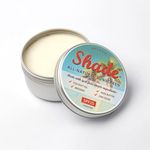Buying Guide for the Best Non Toxic Baby Sunscreen
Choosing the right non-toxic baby sunscreen is crucial to ensure your baby's delicate skin is protected from harmful UV rays without exposure to potentially harmful chemicals. Babies have sensitive skin that can easily react to harsh ingredients, so it's important to select a sunscreen that is both effective and gentle. When shopping for a non-toxic baby sunscreen, consider the following key specifications to make an informed decision that best suits your baby's needs.Active IngredientsActive ingredients in sunscreen are responsible for blocking or absorbing UV rays. For non-toxic baby sunscreens, look for mineral-based ingredients like zinc oxide or titanium dioxide. These are considered safer for sensitive skin as they sit on top of the skin and physically block UV rays, rather than being absorbed. Avoid chemical sunscreens with ingredients like oxybenzone or octinoxate, which can be irritating and potentially harmful. Choose a sunscreen with mineral active ingredients to ensure gentle yet effective protection for your baby.
SPF RatingSPF, or Sun Protection Factor, measures how well a sunscreen can protect skin from UVB rays, the kind that cause sunburn. For babies, an SPF of 30 to 50 is generally recommended. SPF 30 blocks about 97% of UVB rays, while SPF 50 blocks about 98%. Higher SPF ratings offer slightly more protection but can also be thicker and harder to apply. Choose an SPF that balances protection with ease of application, keeping in mind that no sunscreen can block 100% of UV rays.
Broad Spectrum ProtectionBroad spectrum protection means the sunscreen protects against both UVA and UVB rays. UVA rays can prematurely age skin and contribute to skin cancer, while UVB rays are the main cause of sunburn. It's important to choose a sunscreen labeled as 'broad spectrum' to ensure comprehensive protection. This is especially important for babies, as their skin is more susceptible to damage from both types of rays.
Water ResistanceWater resistance indicates how long the sunscreen remains effective while the skin is wet, such as during swimming or sweating. Water-resistant sunscreens are labeled with a time duration, typically 40 or 80 minutes. For babies who might be playing in water or sweating, a water-resistant sunscreen can provide longer-lasting protection. However, it's important to reapply sunscreen regularly, especially after water exposure, to maintain protection.
Hypoallergenic and Fragrance-FreeHypoallergenic and fragrance-free sunscreens are formulated to minimize the risk of allergic reactions and irritation, which is important for babies with sensitive skin. Fragrances can be a common irritant, so choosing a fragrance-free option can help prevent skin irritation. Look for sunscreens labeled as hypoallergenic to ensure they are gentle enough for your baby's delicate skin.
Ease of ApplicationEase of application refers to how easily the sunscreen can be applied to the skin. Creams and lotions are common forms, but sprays and sticks are also available. For babies, a cream or lotion might be easier to apply evenly and thoroughly. Consider how the sunscreen spreads and absorbs, as well as whether it leaves a white residue, which is common with mineral sunscreens. Choose a form that you find easy to apply to ensure your baby gets full coverage.
















